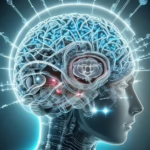Love at First Sight: Myth or Reality?
The concept of "love at first sight" is a timeless notion that has enchanted poets, inspired novels, and graced the silver screen for centuries. From the star-crossed lovers of Shakespeare’s "Romeo and Juliet" to contemporary romantic comedies, the idea that two souls can recognize their connection instantly has proliferated in our culture. But is love at first sight a genuine phenomenon or merely a romantic myth? To explore this question, we must delve into the emotional, psychological, and scientific dimensions of human attraction.
Understanding Love at First Sight
At its core, love at first sight describes an immediate and profound attraction towards another person upon first meeting them. This attraction can be characterized by intense feelings of affection, longing, or an inexplicable connection. Many people claim to have experienced this phenomenon, often recounting tales of seeing someone across a crowded room and feeling an electric spark or a sense of "knowing" them on a deeper level.
However, what exactly are these feelings? Some psychologists suggest that this instant attraction can be attributed to a blend of physical appearance, body language, and personal chemistry. Factors such as shared interests, cultural backgrounds, or even pheromones can stimulate an immediate attraction. But is this attraction love, or merely infatuation?
The Science of Attraction
Psychological studies suggest that the brain’s response to attraction is complex. When we experience "love at first sight," several processes occur. Neurotransmitters such as dopamine create feelings of pleasure and excitement, while oxytocin and endorphins can promote feelings of closeness and bonding. These responses can mimic the emotional state of love, making it easy to mistake instant attraction for something deeper.
Moreover, evolutionary psychology posits that instantaneous attraction has a biological basis. In our ancestral past, being capable of quickly identifying compatible mates could have had survival advantages, facilitating reproduction and the passing on of genes. While this evolutionary perspective offers insight into the nature of attraction, it raises questions about longstanding connections. Can an instant attraction blossom into genuine love, or does it invariably fizzle into mere lust?
Real-Life Experiences
To illustrate the phenomenon, countless couples attest to experiences of love at first sight that transitioned into lasting relationships. For example, the story of how a couple met at a coffee shop, their eyes locking across the room, is a familiar narrative. Often, their ensuing relationship is characterized by deep affection and understanding, suggesting that while the spark may have been instantaneous, it was the subsequent actions, shared experiences, and emotional investment that solidified their love.
Conversely, some argue that love at first sight overlooks the complexities of genuine emotional connection. Love traditionally encompasses not just immediate attraction but also mutual respect, understanding, and the ability to communicate. Many relationships that begin with fireworks eventually encounter challenges, suggesting that what may have felt like love at first sight was perhaps more akin to infatuation.
The Mythos of Love
Culturally, love at first sight feeds into romantic ideologies and societal expectations about relationships. The fairytale narrative—finding a soulmate upon a single glance—can place undue pressure on young couples and skew their understanding of healthy relationships. This creates a paradox: when real love requires time, effort, and patience, two individuals may mistakenly believe that instant attraction should lead to immediate commitment.
Conclusion
So, is love at first sight a myth or a reality? The answer likely lies somewhere in between. Initially, the feelings conjured by instant attraction are real, but that initial spark requires further investigation, nurturing, and growth to develop into a lasting and meaningful relationship.
Ultimately, the notion of love, whether birthed from a single glance or nurtured over time, speaks to the complexity of human connection. While love at first sight may represent the enchanting potential of romantic encounters, true love often unfolds gradually, built on the foundation of shared experiences, deep understanding, and mutual respect. In the end, what matters most is not how love begins, but how it evolves and flourishes over time.
For further exploration of romantic attraction and relationships, consult modern research in psychology and sociology. [modern_footnote_source_link]


























Add Comment